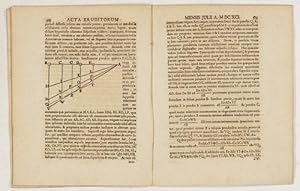
Now on the third day which again started early with a 100% local j-ISBA session. (After a group run to and around Mont Puget, my first real run since 2020!!!) With a second round of talks by junior researchers from master to postdoc level. Again well-attended. A talk about Bayesian non-parametric sequential taxinomy by Alessandro Zito used the BayesANT acronym, which reminded me of the new vave group Adam and the Ants I was listening to forty years ago, in case they need a song as well as a logo! (Note that BayesANT is also used for a robot using Bayesian optimisation!) And more generally a wide variety in the themes. Thanks to the j-organisers of this 100% live session!
The next session was on PDMPs, which I helped organise, with Manon Michel speaking from Marseille, exploiting the symmetry around the gradient, which is distribution-free! Then, remotely, Kengo Kamatani, speaking from Tokyo, who expanded the high-dimensional scaling limit to the Zig-Zag sampler, exhibiting an argument against small refreshment rates, and Murray Pollock, from Newcastle, who exposed quite clearly the working principles of the Restore algorithm, including why coupling from the past was available in this setting. A well-attended session despite the early hour (in the USA).
Another session of interest for me [which I attended by myself as everyone else was at lunch in CIRM!] was the contributed C16 on variational and scalable inference that included a talk on hierarchical Monte Carlo fusion (with my friends Gareth and Murray as co-authors), Darren’s call to adopt functional programming in order to save Bayesian computing from extinction, normalising flows for modularisation, and Dennis’ adversarial solutions for Bayesian design, avoiding the computation of the evidence.
Wes Johnson’s lecture was about stories with setting prior distributions based on experts’ opinions. Which reminded me of the short paper Kaniav Kamary and myself wrote about ten years ago, in response to a paper on the topic in the American Statistician. And could not understand the discrepancy between two Bayes factors based on Normal versus Cauchy priors, until I was told they were mistakenly used repeatedly.
Rushing out of dinner, I attended both the non-parametric session (live with Marta and Antonio!) and the high-dimension computational session on Bayesian model choice (mute!). A bit of a schizophrenic moment, but allowing to get a rough picture in both areas. At once. Including an adaptive MCMC scheme for selecting models by Jim Griffin. Which could be run directly over the model space. With my ever-going wondering at the meaning of neighbour models.





